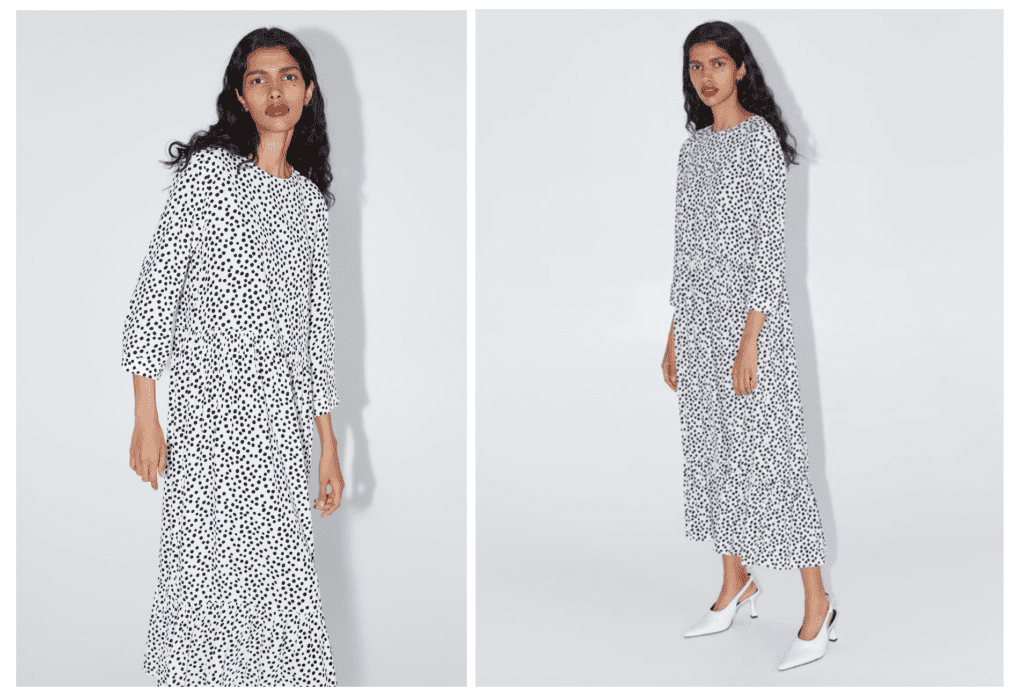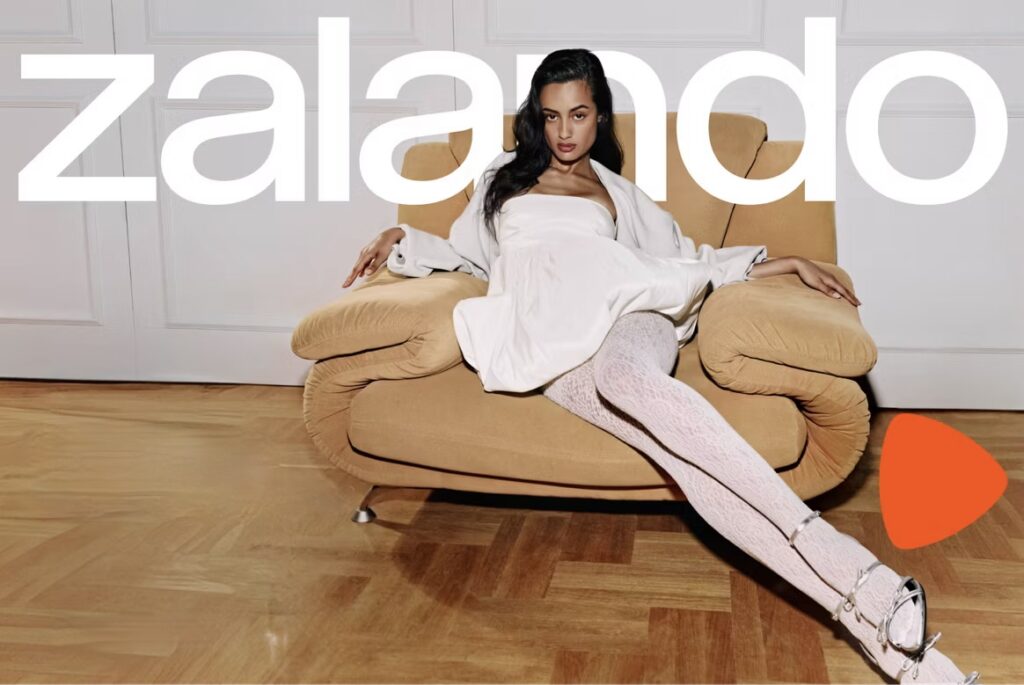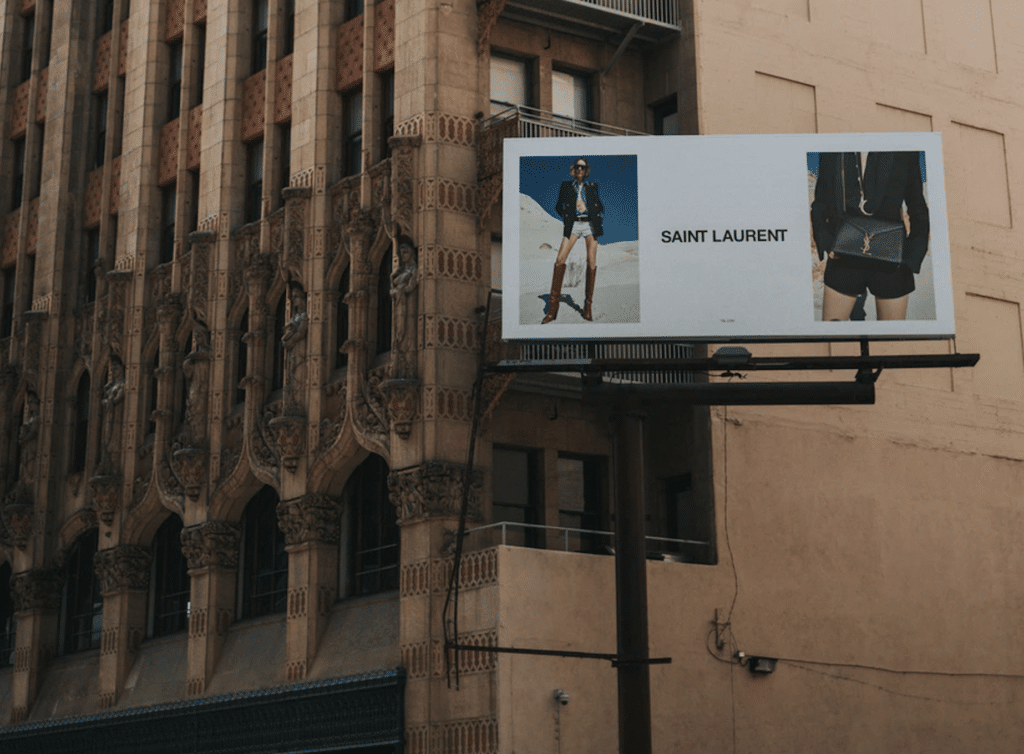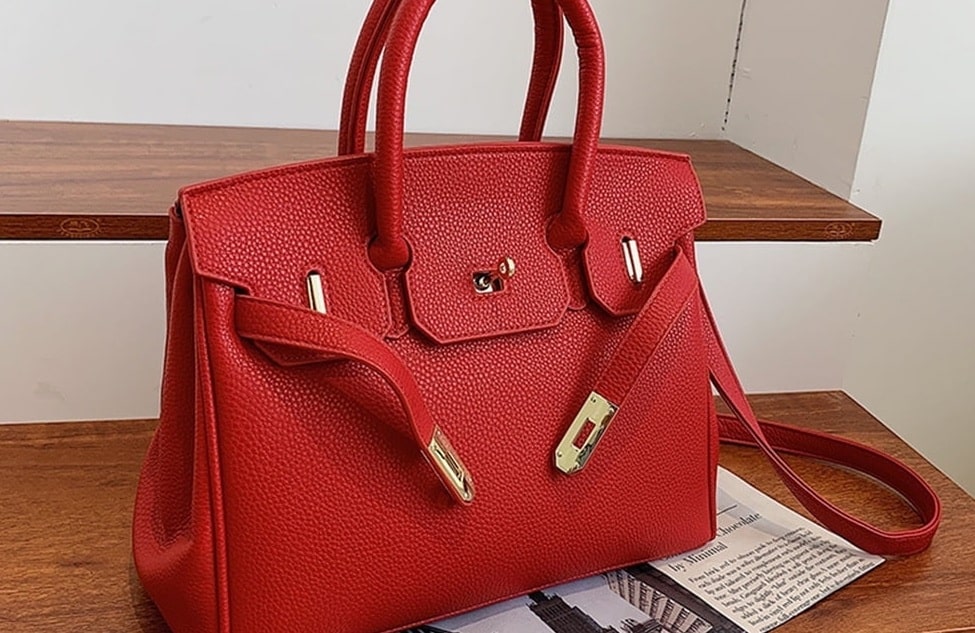The most viral fashion item of the summer thus far is not one of the ubiquitously-gifted Christian Dior saddle bags or the crescent-moon shaped bamboo Ark bag that put Cult Gaia on the map. It is it not a pair of Le Specs x Adam Selman teeny-tiny cat-eye glasses, nor is it an utterly enormous Jacquemus straw hat; those are trends of summers past. This year, at least one of the items that has commanded the attention of hordes of consumers is not an item that came from the runway; it is one that comes from Zara.
One of this summer’s “it” wares is a $50 polka-dot dress from Spanish fast fashion giant Zara, which, as the New York Times’ Elizabeth Paton noted this week, has found so many fans in Europe – from editors and art directors to doctors and songwriters – that it’s sold out (and been restocked), and even spawned a dedicated Instagram account. Not just a dress worth noting because it is an Instagram sensation, it is a compelling garment because of “the high numbers of real women who love [it], rather than celebrities, royals, or influencers,” at least the latter of which are often paid by brands precisely to help build awareness and spur sales of the products they promote, Laura Antonia Jordan, the fashion news and features director at Grazia magazine, told the Times.
The dress, itself, has managed to find fans without the help of famous figures, and it is not the first time a Zara dress has become an “it” item. Almost three years ago, a $60 dusty blue chambray minidress, complete with ever-so-slightly ruffled, off-the-shoulder sleeves began to fly off of Zara’s brick-and-mortar and e-commerce shelves around the world, and make its way onto the airy summer sidewalks. That dress, too, found a home on social media after comedian Lulu Kraus started cataloging sightings on a Tumblr account aptly titled, “The Blue Off-The-Shoulder Dress From Zara.”
The spread of these gone-viral garments is aided in part by the fact that “in an increasingly digital age, many customers want to see their purchases on display on people just like them, affirming their buying decisions and reassuring them they are part of the crowd,” Paton asserts. More than that, though, the spotted dress (as well as the chambray frock that preceded it) is an example of “democratic fashion in action,” Jordan asserts. The $50 polka-dot dress “is versatile, affordable, and readily available,” given Zara’s expansive retail footprint in so many cities across the globe.
In that same vein, the popularity and the relative “it” status of these mass-market dresses during speaks to the undeniable power of the fast fashion market for consumers situated in varying positions across the income spectrum; Zara-style fast fashion is not merely a teenager’s game.
In furtherance of the largescale adoption of fast fashion, which sees retailers creating garments and accessories directly “inspired” by high fashion ones for much lower costs, Zara immediately stood out from its closest counterparts – whether it be Swedish titan H&M or the Los Angeles-based Forever 21, all of which rose to particular fame in the late 2000’s or so. At that time, Amancio Ortega-founded Zara, which now boasts a retail network of more than 10,000 stores, found itself and its then largely novel supply chain to be the topic of discussion amongst fashion retailers, media outlets, and business schools, alike.
A 2009 article from University of Pennsylvania’s Wharton school, for instance, touted the retail giant’s model – one that is “based on speed and efficiency, [and that sees the company] rolling out 20,000 new designs a year and delivering two new collections to its 4,430 shops worldwide every week,” driven largely by its “use of real-time, customer-driven information flowing swiftly between its sales outlets and designers – as a “remarkable feat” in the retail landscape. It was significantly more sophisticated than its low-cost competitors in terms of speed and efficiency in manufacturing, as well as when it came to the general merchandising of its wares. Zara – with its sleek stores and relatively streamlined volumes – was no bargain basement
Fashion industry insiders were similarly taken by the company and its often on-the-nose replications of Phoebe Philo’s Celine aesthetic, in particular. Lookalike Celine wares proved a hit for Zara, largely because one of the main qualms with the Paris-based brand, with its ultra-lux, yet utterly understated aesthetic, was that its “clothes [were] too expensive,” as Whitney Vargas wrote for the New York Times’ T Magazine in 2014. “Prices rarely ever dipped below $1,200, and a good coat could cost upwards of $4,000,” the Telegraph noted at the time.
With that in mind, most consumers, including many fashion industry folks, looked elsewhere to get their fix, and Zara, in furtherance of its mission to take over the world of retail by what The Atlantic’s Derek Thompson called “bringing elite fashion to the masses,” was happy to cater to them with runway lookalikes for a tiny fraction of the runway price.
While Zara’s offerings are no longer dominated by affordable versions of Phoebe Philo-for-Celine wares, Ms. Philo, has, after all, abandoned her post at the LVMH-owned brand (and Hedi Slimane has since taken up the helm), that does not mean that the retailer is not still giving women exactly what they want – in many cases, maybe even more successfully than its high fashion counterparts. This is almost certainly helped by the fact that high fashion prices are oftentimes ridiculously high (and growing), and consumers’ skepticism of high fashion pricing has not diminished.
“Consumers feel that luxury brands have not upheld their end of the bargain to justify their premium price with clearly superior quality goods,” internet-based market research and data analytics firm YouGov asserted in its annual Affluent Perspective 2019 Global Study. That same study revealed that 67 percent of the more than 8,200 affluent consumers surveyed said that many mass-market brands “offer a level of quality [that is somewhat] comparable to luxury brands,” a blow to the long-standing – and somewhat frequently misplaced – theory that luxury brands demand premium prices purely as a direct result of the quality of their offerings. (In reality, premium pricing is usually a direct result of extensive marketing efforts and valuable intellectual property, and not always because the materials are all that more expensive from a cost perspective).
Zara – which brought in more than $18 billion in revenue last year (more than Chanel and probably Louis Vuitton, as well) – is likely benefiting from expensive-and-rising prices of high fashion. It also likely finds favor given consumers’ increased uncertainty about the merit of fashion brands’ claims of “luxury,” especially in light of increased outsourcing of manufacturing (whether it be Louis Vuitton’s “Made in France” shoes made in Romania or other high fashion brands’ “Made in Italy” garments constructed in shoddy Chinese-run factories), paired with the ever-growing emphasis on high-margin items by the so-called upper echelon of the fashion industry.
But, Zara has also had a hand in helping to blur the line between up-market and mass-market – with its high fashion dead-ringer garments and its increased attention to its styling and ad campaigns – or as it calls them, “editorials,” thereby, helping to chip away at the high fashion-dependent notion that expensive price tags equate to better products.
As Business Insider asserted back in 2012, Zara “is by negating the idea that expensive clothes are more desirable.” Isabel Cavill, a senior analyst with Planet Retail, a consulting firm based in London, echoed this notion, saying, “There’s a bit of cachet in picking up something that looks like £500 for £50,” or maybe more accurately, $70 or even $200 if we are talking about its dresses.
With Zara, consumers know what they are getting – “not the cheapest [products] in the fast fashion arena but consistently trend-right products at [more] affordable prices,” per Robin Report, and with extreme convenience. And this is likely why the polka-dot dress and the chambray shift that came before it have found such favor amongst consumers.











